The 1920 Edition of the Book of Mormon: A Centennial Adventure in Latter-day Saint Book History
$79.95
- “This is both the definitive history of the 1920 edition of the Book of Mormon and a peek into how decisions were made at the highest levels of Church leadership at the time.”— Gregory Seppi
- “Richard Saunders’s exhaustively researched history of the publication of the 1920 Book of Mormon stands unmatched among histories of Latter-day Saint bookmaking.”— Peter Crawley
- "An admirable and fascinating work of book history. Its detail, accuracy, and breadth match the highest standards." — William Victor Smith
- "If you love history, are a book nerd, are fascinated by the Book of Mormon, or just love a good read, this book is for you. . . . [It] ought to be in the library of everyone who reads or collects Mormon Studies." — Association for Mormon Letters
- "Saunders’s book is an exciting and vital development in Mormon studies." — Robin Scott Jensen
Available in quality Smyth-sewn hardcover.
Also available through Amazon and Benchmark Books.
Download a free sample preview.
Book Description:
Members of The Church of Jesus Christ of Latter-day Saints tend to see the Book of Mormon through the lens of personal use, as a single textual and scriptural monolith—the Book of Mormon. That is somewhat natural, since we tend to have at hand and in-use, only the copy or version in our language needed to study it for inspiration. In the process, the point tends to get overlooked that while we may accept the text as inspired, the physical embodiment of that text—the Book of Mormon—is a mortal reality. The Book of Mormon, while it has a “spirit,” also has a mortal “body” (or rather, bodies) existing in space and time. As such, it has a history—and because it comes to us in the form of a book, it also has a book history.
This study is divided into three parts. The first part is a straightforward history of the edition’s editing, production, and manufacturing processes. It examines key points in the reprint history of the book, following important factors in the subsequent impressions of the work across nearly thirty years of re-impressions, corrections, transfers, and one new format. The narrative crowded into chapters one through four together leave Part II to catalogue the bibliographic minutia that is the beating heart of analytic book history and which provides entertainment for true-blooded bibliophiles. The details contained in the production and manufacturing contracts and coupled to the typographical evidence explained in Part III, together resolve once and for all the question of what constitutes the 1920 edition and what does not.
Comprehensive Table of Contents:
.
Contents
Acknowledgments
Introduction
Part I An Edition’s History
Chapter 1 Anticipation
Chapter 2 Creation
Chapter 3 Production
Chapter 4 Replication
Part II An Edition’s Catalogue
Chapter 5 Description
Chapter 6 Dated and False-dated Issues
Chapter 7 Complications
Chapter 8 Undated Issues
Part III An Edition’s Future
Chapter 9 Succession
Appendix: The “L.D.S. Missionary Bibles”
Index
Q&A with the Author:
.
Q: Can you give us a brief background to this project? How did it begin?
A: Ebay. This all got started ten years ago in an online discussion with a seller over a book I wanted to return. The seller charged me a high price for a book that they asserted was one book but turned out wasn't what they claimed. As someone who works in book history, I get frustrated when people make claims about things they are trying to sell based on factors they don't understand. For instance, it is frustrating that many sellers fail to understand that a copyright date is not a publication date, or that an error in the book is only rare if it isn't in every copy printed. Initially I wanted to nail down publicly the evidence about the entire edition that would put those points to rest. I did that, and then it sort of grew and got more complicated from there, as projects do. Plus it was lots of fun, a puzzle with a large number of unknown pieces, some of which are still missing. My mom was stunned that so much could be said about merely one book. I have to say, I agree.
Q: Apart from its recent centennial anniversary, what drew you to the Book of Mormon's 1920 edition specifically? What makes it an important moment in the book history of this scripture?
A: Oh—where to start? On one level, this edition is significant because it is the one with which the Church began reclaiming publication of its central work of scripture. Up to this point mission presidents often ordered a printing without approval of any sort. For a couple of decades before this edition appeared, about the only copies of the Book of Mormon actually printed in Utah were vest-pocket editions sold by the Deseret News. Virtually all other copies of the book were produced in the Midwest or the East and shipped to the Great Basin (actually, the 1920 edition was too, until about 1927). The ones for the British Mission were printed there independently in England. Regaining ecclesiastical control of the text, printing, and creating a standard edition (in English, at least) were two reasons this edition is important. It's also important because it was the first edition to carry a fully developed study apparatus—notes and cross references. Orson Pratt's edition in the late 1870s was much less substantive. The 1920 edition was intended as a study edition.
On another level, I was fascinated because the edition is the product of an obsolete and nearly extinct group of technologies. Books themselves are so common in our world that they are virtually transparent—we take their existence for granted without noticing that they represent an enormously intensive series of creative processes. The production processes which made the 1920 Book of Mormon have virtually disappeared, except for the work of a few purists. Like railroad and automobile enthusiasts, a fascination with traditional letterpress printing is just emotional. Hot-metal type and letterpress printing exist in another time, but they are the manifestation of mechanical genius. One cannot appreciate hot-metal typesetting until you get some time to just watch a Linotype machine work, or watch print instantly appear as a press platen kisses the sheet. I've called the Linotype the most elegant mechanical device ever built. A Rolex watch just doesn't hold a candle to the poetry of engineering that is a Linotype machine.
Q: Can you briefly introduce book history as an overall discipline to readers who might not be familiar with it? What do book historians focus on and what methods do they use?
A: Book history works backwards: with a book in hand, it looks at how how they are made, working back to understand the processes that bring things to that point. In a large sense, it's a branch of history that looks at objects to infer activity in the world that produced them. Book history in the US exists as sort of an ignored step-child among scholars of the recent past, but it is very significant to early modern European history. For instance, I recently listened to a fascinating three-part presentation tracking physical details in the sheets of paper bound into late-medieval manuscripts. The scholar explained how physical details help generate a clearer picture of the scope of paper production and trade relations for paper distribution through Europe before printing.
Book history of the twentieth century tends to focus on the business of publishing or the sociology of reading. That's a bit different than what I've done in this book. Rather than look at the way the Book of Mormon is used or understood, I've tried to figure out how the copies were made. Once the contexts of production and distribution are better understood, they become a basis for understanding how print fit into missionary work and the emerging global church. Remember that most social organizations like churches rely on printed material not only to teach doctrine, but also to encourage social cohesion, especially among people living beyond core populations. Both those points were reason for publication of the Millennial Star early in the British Mission history, and for virtually every other mission publication up until the consolidation of church magazines in 1972. Print matters.
Q: Where does your new book fit into the existing landscape of Latter-day Saint book history?
A: There really isn't a Latter-day Saint book history—yet. There are good examples but coherence and conversation has yet to emerge. Most present scholarly attention is either theological or historical, and popular writing leans heavily toward either study or inspiration. There are checklists like A Mormon Bibliography, 1830-1930; and there are marvelous historical studies, like Dale Morgan's historical bibliographies from the 1940s, and the three magisterial volumes of Peter Crawley's Descriptive Bibliography of the Mormon Church. Hugh Stocks' dissertation on the Book of Mormon and David Whittaker's work on pamphleteering are probably the first real studies qualifying as book history.
Q: Were there any misconceptions you came into this project looking to correct?
A: If there was a misconception that needed to be resolved, it is that the Book of Mormon is divine dictation in the sense claimed by Muslims about the Qur'an, that is, that the text is inherently pure and that not a single character can be changed. The Book of Mormon has never been a single, unchangeable text. In fact, in the introduction I remind readers that I am looking at the Book of Mormon—the mortal embodiment of the book's “spirit” or text. In this book history of the Book of Mormon, I look at remarkably small details—the way printed paper is marked and folded, for instance—to understand how the Book of Mormon was produced, and then what that production implies about the books' distribution among the Latter-day Saints in the US.
Q: How is the book organized?
A: The book divides rather neatly into three parts. The first part is a straightforward exploration of Latter-day Saint publishing practice leading up to the twentieth century, and why there was a new edition commissioned in the first place. Then it walks through the editorial and book-production processes leading up to release of the new edition. I used to work in publishing myself, so readers get the benefit of an insider's knowledge of what is involved in making a book. A late chapter in this part carries the book through reprints and what that tells us about the changing nature of Church's business organization.
The second part is mostly definitions and illustrations needed to describe physical elements of the books themselves. It provides context to understand the details explored minutely in the third part, but if one doesn't understand the terms, the second half of the book won't make sense.
The third part is a simplified form of traditional descriptive bibliography, a catalogue of details describing one book from another. Each identifiable printing between 1920 and 1948 is described in terms of its paper, printing, collation (folding), binding, ornamentation, and errors and flaws. I catalogue differences and similarities, including as much of the known and inferred story about that particular printing or binding of the book as I can muster. Sometimes we have a pretty good idea of what was going on with a book, but sometimes the best we can do is infer what may have happened based on changes we can identify. It is pretty technically specialized, but I've written it for people who really want to get into the weeds. Collectors will find the details essential, while casual readers will be interested mostly in the notes. I don't expect very many people will read every word, and that's fine.
Q: The first part uses the 1920 edition's creation, production, and replication as a case study that shows how the LDS Church operated as an organization during the early twentieth century. What's something that surprised you when researching this process?
A: That “the Church” was so informal in producing printed work through the nineteenth century and into the twentieth century in the first place. Publishing was largely in the hands of private individuals like mission presidents, and the auxiliary organizations. In my opinion this mostly reflects the nature of communication and transportation well before things were instantaneous. Only when Heber Grant became president did the Church (at his instruction) begin to pull things together and evolve a modern corporate structure for the sake of efficiency. Publishing was only a small sliver of that process, but it was an important one. The Church's global printing and distribution operation really effectively began only with Grant and Talmage in 1919. Coordination was the initial step, taken well before correlation.
Q: Do you have any favorite details to point out about this edition of the Book of Mormon?
A: Yes, certainly. I have three of them, and we know only half the story of the first one. In July 1920, James Talmage put together a list of 99 textual changes he felt needed to be made in the first half of the book. Unfortunately the list for the second half doesn't survive though we know there was one. None of Talmage's recommendations involve doctrine; in fact, most of them reflect little more than shifts in English grammar. Even so, the six apostles of the Book of Mormon committee did not make changes on their own initiative, even when acting unitedly as a council. The combined Quorum of Twelve Apostles and First Presidency discussed every one individually. They were serious about the text as a text without being obsessively literal about its state as a historical document.
My other favorite is the missed hyphen in 1 Nephi 10:18. As I note, despite two other typographic errors being corrected, this one was carried carefully through the entire edition, then through two more editions of the Book of Mormon, though probably no one knew why. It was not corrected until the 2012 edition—ninety years after being made. I like the story of that particular error because first, it reminds me that no human enterprise is entirely flawless—even in the Restoration. That point relates closely to the second reason: it reminds me that God uses flawed people to do marvelous things. It was an error in scripture, but even then for two more generations an error in scripture was evidently not significant enough that God took any notice. He just let it sit there and worked with what people could offer.
The third point is that the entire edition—from first concept to bound book—took merely nine months. That's just remarkable.
Q: What do you hope readers will take away from this book?
A: How much effort and how many fascinating stories there are in everyday things. There are few human creations more intentional than a book (though maybe architecture or airplanes would qualify). Scriptural texts do not merely appear in multiple copies. I find that investment and intentionality wonderful to contemplate and hope other folks begin see that book history as a rewarding puzzle.
Praise for The 1920 Edition of the Book of Mormon:
“Richard Saunders’s intricate knowledge of the printing industry and scholarly rigor in his approach to the history of early twentieth-century printing are apparent throughout. Saunders writes in an approachable style, but his attention to detail is exactly what one would hope to find in any academic work. This is both the definitive history of the 1920 edition of the Book of Mormon and a peek into how decisions were made at the highest levels of Church leadership at the time. A priceless work for bibliophiles and a great read for anyone interested in the history of The Church of Jesus Christ of Latter-day Saints in the twentieth century.” — Gregory Seppi, Curator, L. Tom Perry Special Collections, Brigham Young University
“Saunders’s book is an exciting and vital development in Mormon studies. Any bibliographic question of any Book of Mormon printed between 1920 through 1948 will now start with Saunders. He has thrown down the gauntlet, and collectors, bibliographers, librarians, and book historians will now jump at the opportunity at finding an impression or binding Saunders failed to list. The effort to fully document and explore the various volumesof this 1920 edition is underway, masterfully begun by Saunders. The amount of work, detail, and care he placed into this volume is apparent.” — Robin Scott Jensen, Journal of Mormon History
“Richard Saunders’s exhaustively researched history of the publication of the 1920 Book of Mormon stands unmatched among histories of Latter-day Saint bookmaking. And the bibliographic portion of his work that details the impressions, states, and bindings of the book also stands alone and will be indispensable to those who collect and study the book.”— Peter Crawley, Author, A Descriptive Bibliography of the Mormon Church
“Richard L. Saunders’s The 1920 Edition of the Book of Mormon is so full of careful scholarship and keenly calibrated insights that I found myself not only learning new things on almost every page, but feeling like I had in my hands a model for what thoughtful, thorough, engaging bibliographic scholarship looks like. . . . The glory of this volume is the care with which he traces and analyzes even the smallest and seemingly insignificant changes to be found in different printings of the 1920 Book of Mormon. . . . Saunders has given much to understanding the emergence of a standard work in Latter-day Saint publishing and, in so doing, has created a new standard work of his own.” — Paul C. Gutjahr, Journal of Book of Mormon Studies
“Reveals the complexity of the Book of Mormon’s print history in a way that no prior scholarship has even anticipated. . . . The book is lavishly illustrated, serving almost as a guidebook to print history as such, and it is itself—quite appropriately—beautifully printed and bound. Greg Kofford Books and the W. W. Phelps Society are to be commended for making such highly specialized but such deeply important work available.” — Joseph M. Spencer, Journal of Mormon History
"Richard L Saunders is an AMAZING historian and author. . . . If you love history, are a book nerd, are fascinated by the Book of Mormon, or just love a good read, this book is for you. . . . [It] ought to be in the library of everyone who reads or collects Mormon Studies.” — Andrew Hamilton, Association for Mormon Letters
"Richard L. Saunders has produced an admirable and fascinating work of book history. Its detail, accuracy, and breadth match the highest standards. Moreover, in spite of its swim in technicalities, it is a fun read ...There is really nothing like it in the Latter-day Saint book genre." — William Victor Smith, By Common Consent
"I was merely curious when I started the book, but I soon found I couldn’t put it down and was eagerly looking forward to picking it up." — Terry Hutchinson, host of Bookmarks, KDXU 890 AM St. George
About the Author:
 Dr. Richard L. Saunders, social historian, academic librarian, and former Dean of Library Services at Southern Utah University, has been a student of print culture and book history for over two decades. Informed by activity as an amateur handset printer and craft bookbinder, his scope of interest includes papermaking, typography, printing, and both historical and descriptive bibliography. Dr. Saunders worked professionally on the production side of commercial publishing in the 1990s during the industry’s transition from filmsetting to direct-to-plate technology. His professional output includes Printing in Deseret: Mormons, Politics, Economics, and Utah’s Incunabula, 1849–1851 (Univ. of Utah Press, 2000), and Reams in the Desert: Papermaking in Utah, 1849–1893 (Legacy Press, 2021).
Dr. Richard L. Saunders, social historian, academic librarian, and former Dean of Library Services at Southern Utah University, has been a student of print culture and book history for over two decades. Informed by activity as an amateur handset printer and craft bookbinder, his scope of interest includes papermaking, typography, printing, and both historical and descriptive bibliography. Dr. Saunders worked professionally on the production side of commercial publishing in the 1990s during the industry’s transition from filmsetting to direct-to-plate technology. His professional output includes Printing in Deseret: Mormons, Politics, Economics, and Utah’s Incunabula, 1849–1851 (Univ. of Utah Press, 2000), and Reams in the Desert: Papermaking in Utah, 1849–1893 (Legacy Press, 2021).More Information:
291 pages
ISBN: 978-1-58958-775-5 (hardcover)

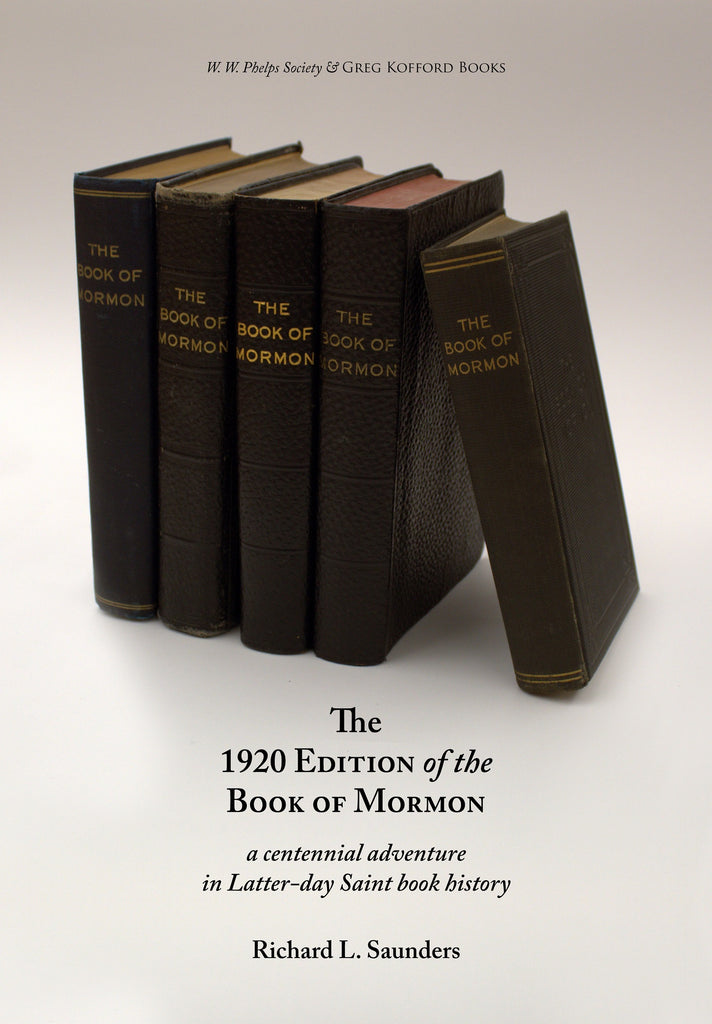



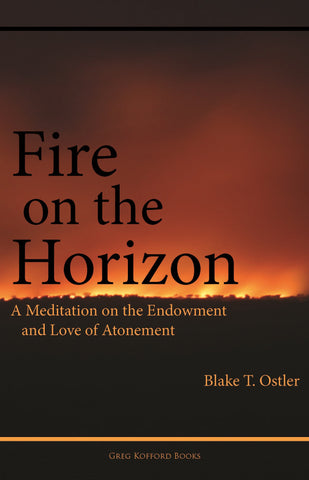
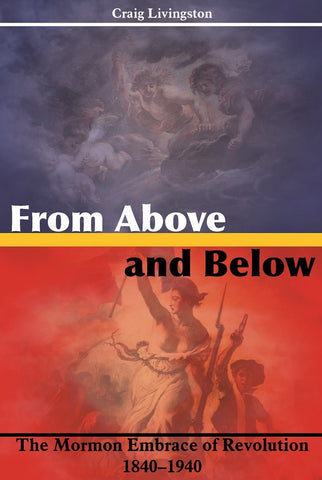
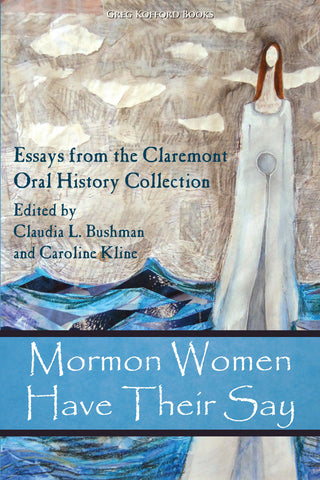
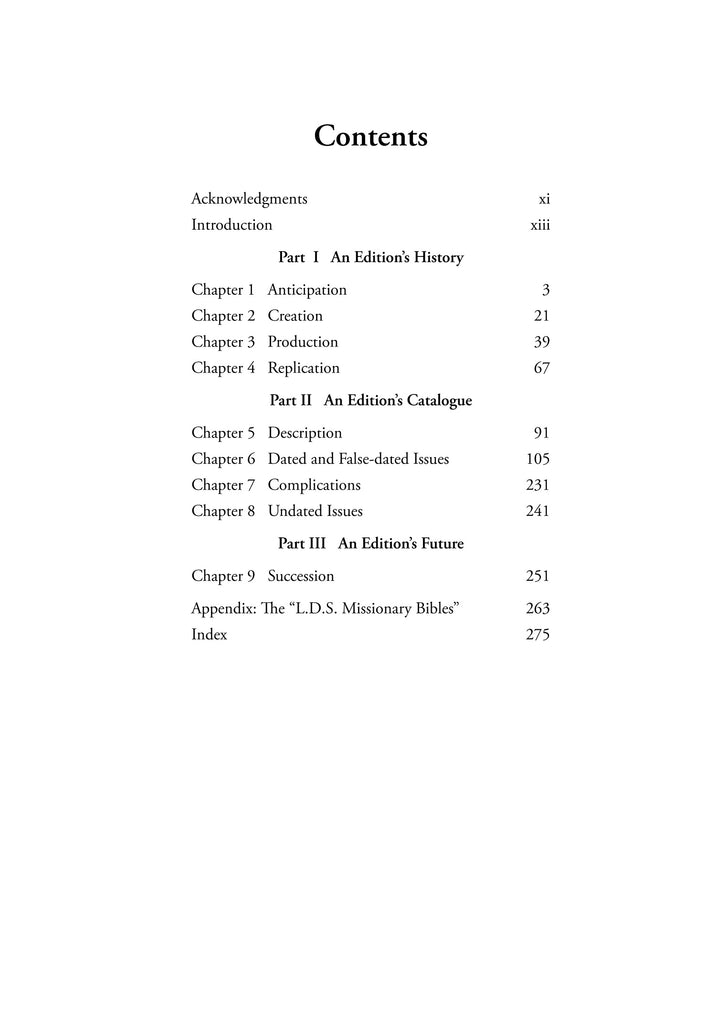
Share this item: